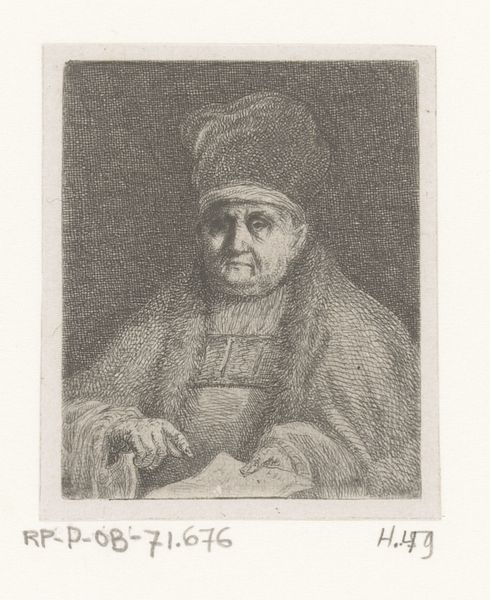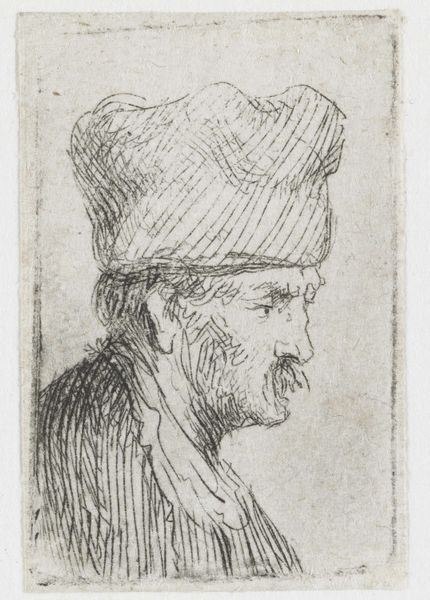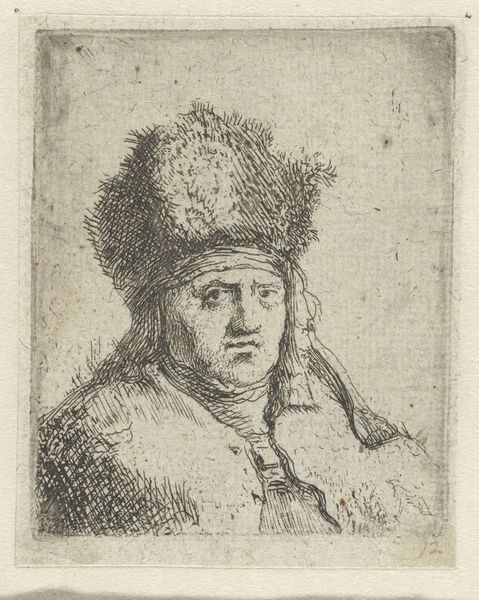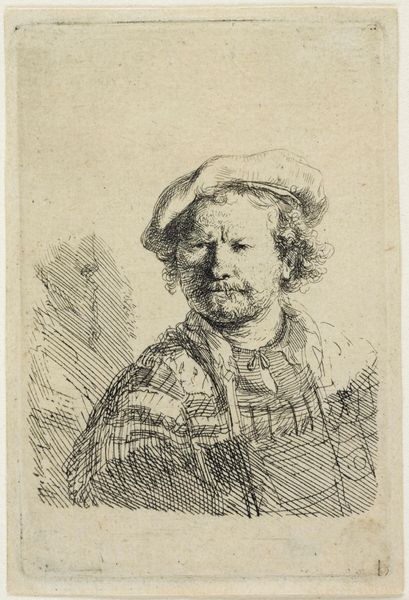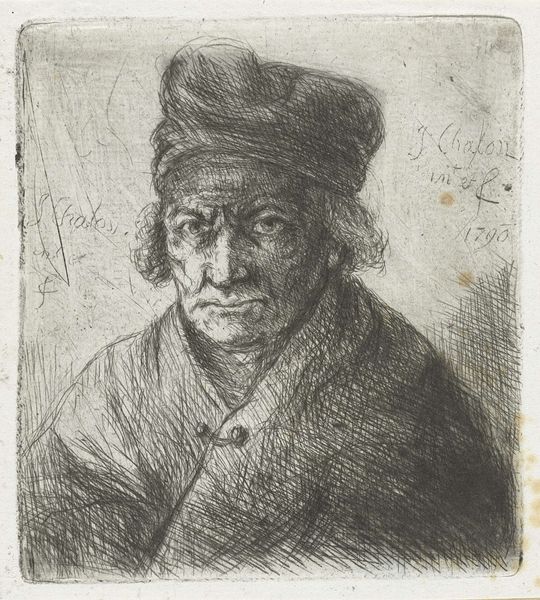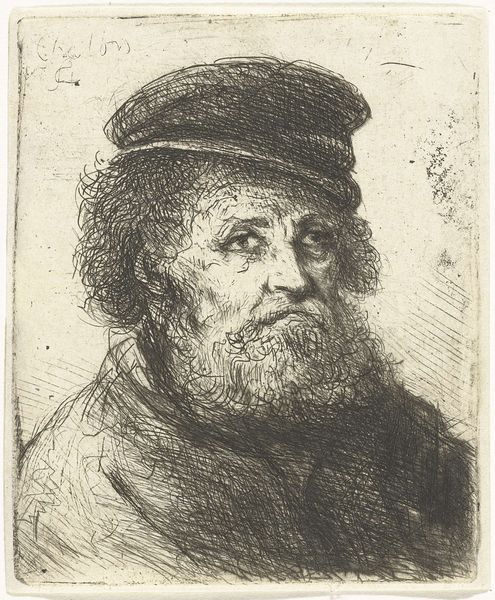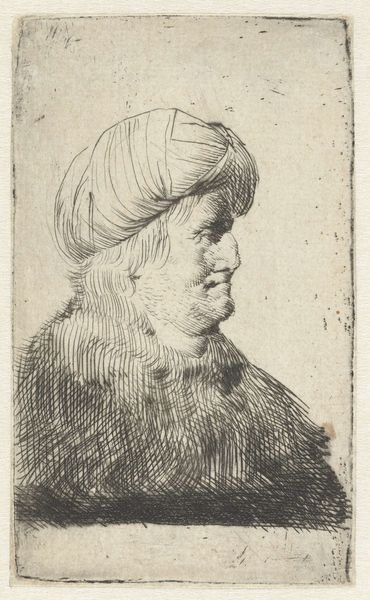
Dimensions: height 68 mm, width 46 mm
Copyright: Rijks Museum: Open Domain
Editor: So, this is *Head of a Man with a Turban and Feather*, an etching from 1787 by Jean-Pierre Norblin de la Gourdaine. There's something almost… melancholic about it. He looks so burdened. What do you see in it? Curator: As a historian, I see this as a reflection of late 18th-century society grappling with shifting power structures. The turban itself, and the figure’s somewhat exoticized attire, point to a European fascination with the “Orient,” but filtered through a lens of increasing imperial anxiety. Who was this man, really? Is it even meant to be a particular person or simply a character study of that era? Editor: A character study… that's an interesting point. I was focused on the individual’s implied emotions, but the artist could have been trying to convey something about the attitudes of society at large. Curator: Precisely. Etchings, like prints, were often used for disseminating political ideas or social commentary. Think about where this image might have been circulated: who saw it? Why a turban and not say, a powdered wig? Editor: Good questions! The figure could be a reference to debates around orientalism that might have taken place within intellectual or even political circles during that period. Maybe it sparked conversations about the "other." Curator: Exactly. It forces us to consider the socio-political contexts that influenced its production and reception, even today. And how museums affect all of this, the aura around it when is placed in a white wall versus an history book. Editor: I guess I had only scratched the surface focusing on his emotions alone. Considering the image’s public role back then definitely opens a new angle. Curator: Right, looking at it with an historic perspective highlights the politics involved, influencing and changing its interpretation.
Comments
No comments
Be the first to comment and join the conversation on the ultimate creative platform.
